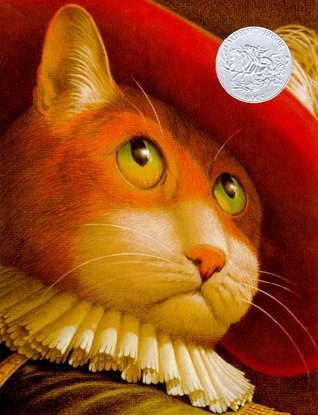Puss in Boots Book Summary
TL;DR
Charles Perrault's "Puss in Boots" tells the enchanting tale of a clever cat who transforms his lowly master into a figure of wealth and status, showcasing themes of cunning and resourcefulness through Fred Marcellino's vibrant illustrations.
What is Puss in Boots about
"Puss in Boots" is a classic fairy tale originally penned by Charles Perrault in 1697, centered around a clever cat that uses trickery to elevate his master's social standing. The story unfolds as the miller's son inherits a seemingly worthless cat, only to discover that the cat possesses extraordinary cunning. Through a series of clever schemes, the cat helps his master gain wealth, prestige, and even win the hand of a princess. This translation by Malcolm Arthur, paired with Fred Marcellino's captivating illustrations, revitalizes the timeless narrative, making it accessible and appealing to both children and adults alike.
Puss in Boots 6 Key Takeaways
The miller's son inherits a cat.
The story begins with a miller's son who inherits a cat from his father. Although he feels disappointed, the cat surprises him by declaring its intent to help him achieve great things.
Puss's clever schemes begin.
Puss in Boots devises a plan, first by using trickery to present his master as a wealthy nobleman to the king, setting the stage for their rise in status.
Puss captures a rabbit for the king.
To establish his master's newfound identity, Puss captures a rabbit and presents it as a gift to the king, further enhancing their reputation.
Puss tricks the ogre.
Puss confronts an ogre who possesses great wealth, using cunning to trick him and ultimately secure the ogre's castle for his master.
The miller's son marries the princess.
With Puss's assistance, the miller's son wins the affection of the princess, leading to a royal marriage and cementing their status.
Puss becomes a noble cat.
The tale concludes with Puss enjoying a life of luxury, affirming that cleverness and wit can change one's fortunes.
Top Puss in Boots Quotes
- "With a little ingenuity, one can turn the tables on fate itself."
- "A well-dressed appearance can open even the grandest of doors."
- "Cunning is often more powerful than force."
Who should read Puss in Boots?
This book is ideal for children and adults who appreciate classic fairy tales, rich illustrations, and engaging narratives. Readers will enjoy the lessons on creativity and resourcefulness, along with the whimsical adventures of Puss and his master.
Puss in Boots Best Reviews
- "Marcellino's illustrations bring a new life to this classic tale, making it a delightful addition to any child's library." - BookPage
- "The vivid colors and dynamic illustrations complement the story's cleverness and humor beautifully." - School Library Journal
People also liked these summaries
Puss in Boots FAQs
What is the main moral of Puss in Boots?
The main moral of "Puss in Boots" is that cleverness and presentation are crucial in navigating social situations; the cat's schemes show that intelligence can lead to success.
How has Puss in Boots been adapted over the years?
Since its publication, "Puss in Boots" has inspired numerous adaptations in film, theater, and literature, each adding unique interpretations while preserving the story's core themes.
Why is Fred Marcellino's illustration significant?
Fred Marcellino's illustrations offer a vibrant and engaging portrayal of the story, enhancing the narrative with humor and visual splendor, making it appealing to both young readers and adults.
